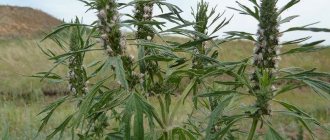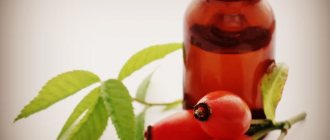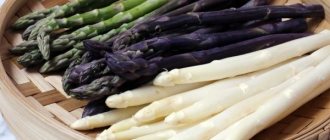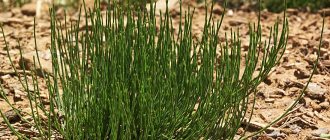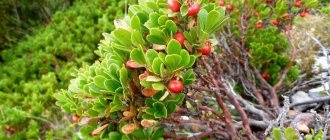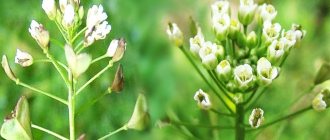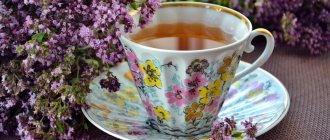Photo: UGC Knotweed is an inconspicuous at first glance, but very tenacious annual plant. The grass knotweed owes its popular name to its rapid and active growth. Reviews about it indicate the variety of medical uses and the undeniable value that knotweed conceals. The benefits and harms, along with the most common methods of use, are described in the article.
What does a knotweed look like?
Appearance of knotweed.
Photo: Yandex.Pictures Knotweed is difficult to confuse with any other plant. This is a weed that grows under our feet. Knotweed produces a bunch of long and fairly strong stems from the root. Their length can reach 40 centimeters. The stem of knotweed is highly branched from the base, often creeping or rising from the ground.
The leaves are alternate, very small, lanceolate, sessile, up to two centimeters long. They have smooth edges and a blunt top. The knotweed cannot boast of very beautiful flowers and buds. The flowers are inconspicuous, small, pink or white, they do not form inflorescences, they are collected in several pieces in the axils of the leaves.
The knotweed blooms all summer, from spring to late autumn. The fruits ripen as the plant blooms, starting in July.
The knotweed spreads well, as its seeds stick to shoes, the legs of animals, and the wheels of any vehicle. That's why knotweed even grows between paving slabs.
Botanical description
What is knotweed? Polygonum aviculare - as the annual herbaceous plant is called in Latin - belongs to the genus Knotweed of the buckwheat family. Knotweed can grow up to 80 cm in height. According to the description, Knotweed has:
- thick, tap root;
- stem – up to 60 cm, with pronounced nodes, branched, creeping at the base;
- leaves are elliptical in shape, up to 5 cm long, up to 1.5 cm wide, grayish-green in color, with short petioles, with whitish membranous bells at the nodes.
Experts note that after flowering the stems become stiff. According to the description, the knotweed blooms from May to October. In this case, the following are observed:
- flowers in buds of 2-5 pieces, located in the axils of the leaves, small, have 3 pistils, 8 stamens, color – pink-green;
- the fruits are a flat triangle, black or brown, ripen from July to September, and are very loved by birds.
Where does knotweed grass live?
This plant is distributed throughout Russia, except in places with eternal ice. For knotweed, temperature and humidity do not matter; it is comfortable in any climate. The plant is resistant to trampling, it gravitates towards weedy places, easily tolerates natural disasters, and grows on any soil. Highlander can be found:
- along country roads;
- in the mountains;
- in gardens as a weed;
- in the gardens;
- near rivers;
- on sports grounds;
- at farmsteads;
- on pastures.
What does bird buckwheat look like?
The knotweed grass remains unchanged in color until autumn, forming an elastic carpet. The features of this medicinal plant are noted. Noteworthy:
- a long stem that extends along the ground may rise slightly;
- small flowers with five petals, green with a pink border;
- clusters of buds in the axils of leaves at different phases of blooming;
- oblong, large leaves of pale gray-green color.
Where does the knotweed grow?
Knotweed is widespread in Eurasia and North America. In Russia it can be found everywhere except the northernmost corners of the country and high mountain regions.
Knotweed is an unpretentious weed; it is a common plant in vacant lots, village streets, lawns near houses, along roads. This weed can settle in vegetable gardens and orchards, but people have never considered it a malicious weed. Among the people, knotweed has firmly established itself as a good medicinal plant.
Polygonum herbs are a whole complex of dozens of species and subspecies that are difficult to distinguish even for botanists. But in medicinal terms, all types are the same and when preparing raw materials they are not distinguished.
Knotweed improves appetite and helps you gain weight. It has been noticed that geese that graze for a long time on knotweed quickly become fat. This is where another popular name for the plant came from: gossamer.
Planting and caring for knotweed
- Flowering: from April to winter.
- Planting: sowing seeds in the ground in early September or mid-December using lawn growing technology.
- Lighting: bright sunlight or partial shade.
- Soil: any.
- Watering: regular but infrequent, mainly during dry periods.
- Fertilizing: twice (in spring and summer) with complex mineral fertilizer.
- Reproduction: seed.
- Properties: is a sought-after medicinal plant.
Read more about growing knotweed below.
Medicinal properties of knotweed
The grass is so popular that it is used not only in Russia. Knotweed is used for treatment in Tibet, China and Korea.
The entire above-ground part of the plant is used for medicinal purposes. Knotweed is completely non-toxic to humans and poses no danger. The chemical properties of knotweed herb have been well studied: it contains a lot of silicic acid and tannins.
In the aerial part of the plant, the glycoside avicularin, resins, essential oil, ascorbic acid, carbohydrates, proteins, zinc, phosphorus, and calcium salts were found. Dry leaves contain up to 40 mg% carotene. The glycoside is avicular, used in the treatment of whooping cough.
- Scientific medicine uses knotweed as a hemostatic, diuretic and astringent. An infusion of knotweed reduces blood pressure and improves lung function.
- In a hospital setting, knotweed infusion and decoction are prescribed for uterine bleeding in the postpartum period. Plant-based preparations enhance contraction of the uterine muscles and help stop bleeding.
- The grass of the knotweed is included in the mixture according to the recipe of M.N. Zdrenko and is used for papillomatosis of the bladder and anacid gastritis.
- Knotweed is used in the treatment of pulmonary diseases and as an astringent.
- In scientific medicine, an infusion of knotweed herb is used as a means of promoting the removal of stones in urolithiasis.
- The antispasmodic effect of knotweed has been established.
Knotweed grass contraindications
Despite the huge range of medicinal properties, knotweed has certain contraindications that should definitely be taken into account. This herb should not be used during pregnancy (can lead to miscarriage) and lactation, as well as with thrombophlebitis, an increased number of platelets in the blood, angina pectoris, low blood pressure, varicose veins. It is also worth remembering that any plant can cause an allergic reaction. At the first sign of allergy, treatment with knotweed herb should be discontinued. In general, before using any medication, you should consult your doctor.
The use of knotweed in folk medicine
In folk medicine, knotweed is used in the form of infusions, decoction, powder and fresh juice during the flowering period of the plant.
- Infusions treat gastritis, stomach and duodenal ulcers, liver, kidney, and bladder diseases.
- The infusion can be drunk to improve metabolism, for all types of pulmonary diseases and even for tuberculosis.
- Polygonum preparations help get rid of sand in the kidneys and bladder.
- You can wash your hair with a decoction of the herb for better hair growth.
- Wounds and bruises can be treated with compresses from an infusion of fresh herbs, or by applying fresh leaves to the site of the bruise.
- A hot infusion of knotweed herb can be used to steam swollen and tired legs from long walking.
In the old days, fear in children was relieved by bathing in a herbal decoction, and a freshly boiled chicken egg was placed under the pillow. This procedure was repeated three evenings in a row.
Chemical composition
The plant contains the following biologically active substances:
- vitamins A, C, E, K - improve vision, have an anti-inflammatory, antioxidant, immunostimulating, regenerating effect on the body, regulate the process of blood clotting
- saponins - take an active part in metabolic processes occurring in the body, help with food poisoning, constipation
- flavonoids – stimulate metabolic processes in the body, have an antioxidant effect, preventing premature aging processes, strengthen capillary walls, have anti-edematous, anti-inflammatory, antihistamine, diuretic, choleretic, hepatoprotective effects
- coumarins – have antispasmodic, anticancer effects, are anticoagulants
- tannins – have astringent, anti-inflammatory, antiseptic, antitumor effects
- silicic acids – prevent the development of diseases of the musculoskeletal system, varicose veins, hemorrhoids, thrombosis, improve the condition of hair, skin, nails, blood vessels and ligaments
Nutritional value of knotweed
Surprising fact: Knotweed has good nutritional value and can be compared to legumes. People have long used the young stems and tender leaves of the plant for food.
Puree of knotweed and nettle leaves is an excellent seasoning for meat and cereal dishes. Knotweed can be added to soups; powder from dry leaves can be added as a dressing for first courses in the winter.
- Knotweed can be used to make salads with eggs, meat and vegetables. For the simplest salad, you need to chop the greens of the plant, add onions, boiled eggs, sour cream, salt and a little dill.
- You can make caviar from the knotweed: pass the washed greens through a meat grinder, add boiled carrots, dill, onions, vegetable oil, a little vinegar, mustard and salt.
Traditional medicine recipes
- To prepare a simple infusion, the herb should be crushed, pour boiling water in a ratio of 1/10 and place in a boiling water bath for 10 minutes. Then remove the infusion from the heat, cool, let it brew for an hour, strain. Take one tablespoon three to four times a day.
Treatment of anemia with knotweed
- In case of anemia from blood loss, pour one tablespoon of the whole plant with a glass of boiling water and leave for two hours. Take 100 ml of infusion 3 times a day before meals.
Bath for the treatment of arthritis
- To treat arthritis, you can use an infusion: pour 300 grams of herb into five liters of boiling water. Let it brew for two hours, strain and pour into the bath. The water temperature should be between 32 and 34 °C. Take a bath every other day, the duration of the procedure is 20 minutes.
Knotweed for the treatment of hypertension
- Prepare an infusion: pour 20 grams of dry and crushed herbs into one glass of boiling water. Let it brew for 15 minutes, strain, and take a tablespoon three times a day for hypertension.
Treatment of skin diseases and allergic diathesis
- Prepare a decoction: pour 20 grams of herb with a glass of water, put on fire and boil for 10 minutes. Remove from heat and strain. Use the infusion for lotions, washes and applications for skin diseases and diathesis.
Knotweed against diarrhea
- Pour three teaspoons of fresh knotweed herb into two glasses of boiling water. Let it brew for four hours. For diarrhea, take 1/2 cup 4 times a day before meals.
Cough treatment
- To treat cough and whooping cough, you can take an infusion: brew 20 grams of herb with a glass of boiling water. Let it brew for one hour, strain. Take a tablespoon 2-3 times a day.
Infusion for treating bruises
- Knit 40 grams of dry grass, brew with a glass of boiling water for half an hour. Strain and use for lotions and compresses for injuries and bruises.
Infusion for gum inflammation
- This infusion can also be used for applications and mouth rinses for stomatitis. Infusion: pour 20 grams of dry herb with a glass of boiling water, leave for half an hour.
Sem. buckwheat - Polygonaceae
DESCRIPTION. An annual small herbaceous plant with a short, slightly branched tap root. The stem is spread along the ground, ascending, less often erect, strongly branched, bearing at the nodes small, transparent silvery, membranous, long-pointed bells. The leaves are alternate, oblong, obtuse-pointed, entire-edged, short-petioled, about 1.5-2 (3) cm long. The flowers are small, inconspicuous, collected in groups of 1-5 in the leaf axils. The perianth is greenish or pale pink, simple, cut halfway into five lobes, slightly expanding with fruit. Perianth lobes along the edges with a reddish or white border. The plant has 8 stamens, a pistil with an upper single-locular ovary and three styles. The fruit is a narrow triangular, almost black, matte nut 2-2.5 mm long. Blooms from June to autumn.
RAW MATERIALS. The medicinal raw material is the aerial part of the plant (Herba Polygonii avicularis), collected during the flowering period. It consists of branched leafy stems, usually with flowers. The leaves and stems are green, bitter, slightly astringent in taste. The moisture content in the finished raw material should be no more than 13%, darkened leaves no more than 3%, roots no more than 2%, foreign organic impurities no more than 2%, mineral impurities no more than 2%.
DISTRIBUTION AND PROCESSING. Knotweed grows along roads, near homes, and is often found on riverine sands. Abundant in places, forms almost pure thickets.
Knotweed grass should be collected during the flowering phase. The collection is carried out in dry weather throughout almost the entire summer. When harvesting, the grass is cut with a knife or sickle at the bottom of the stem. Dry, spread out in a thin layer, in the open air, in attics or under awnings. Drying is stopped when the stems become brittle.
CHEMICAL COMPOSITION. The flavonoid avicularin was found in the grass of knotweed. In addition, the grass contains about 3% tannins, ascorbic acid, resins, carotene, and silicic acid. Hydroxymethylanthraquinones and vitamins A, C were found in the roots. K, ash substances, fiber.
APPLICATION. It has been established that aqueous and alcoholic extracts from the knotweed herb increase diuresis, lower blood pressure, increase the rate of blood clotting, increase breathing, and tone the muscles of the uterus.
In folk medicine, infusions or decoctions of the herb are used for inflammation of the bladder, kidney diseases, in particular urolithiasis. In addition, preparations of knotweed are recommended as a hemostatic agent, especially for uterine, gastric, intestinal bleeding, stomach and duodenal ulcers, diarrhea and dysentery, for regulating metabolic disorders in diabetes mellitus, diathesis, obesity, strengthening capillary walls, and inflammation of the mucous membrane gastrointestinal tract, the presence of sand and kidney stones, malaria, tuberculosis, hemorrhoids and uterine bleeding, as a general tonic for nervous exhaustion.
Fresh crushed herbs are applied to wounds and ulcers as a wound healing and anti-inflammatory agent.
RECIPES
Infusion:
a) 1 tbsp. Pour 1 cup of boiling water over a spoon with the top of the herbs, leave for 1 hour, strain. Take 1 tbsp. spoon 3 times a day for bleeding, cough, whooping cough, gallstones and urolithiasis;
b) pour 1 dessert spoon of herb into 1.5 cups of boiling water, leave for 2 hours, strain. Take ½ glass 3 times a day as a tonic and general strengthening agent;
V) . Pour 3 teaspoons of fresh herbs into 2 cups of boiling water, leave for 4 hours, strain. Take ½ glass 4 times a day before meals for diarrhea.
A hot infusion prepared from 2-3 tablespoons of crushed herb (preferably fresh), brewed with 2 cups of boiling water (daily dose), and a decoction (20 g of knotweed grass, pour a glass of water, bring to a boil and boil for 10 minutes) is used internally. It is recommended to take a tablespoon 3 times a day. The taste of the decoction is astringent.
To treat wounds that do not heal for a long time, a paste of mashed fresh plants is used.
The use of knotweed is CONTRAINDICATED for acute inflammation of the kidneys and bladder.
USE IN NUTRITION
100 g stems and leaves of knotweed, 20 g green onions, 2 tbsp. spoons of sour cream, salt.
Wash the young stems and leaves of the knotweed, chop finely, mix with green onions and sour cream, and add salt.
Polygonum soup with vegetables
0.5 l meat broth, 2 pcs. potatoes, 1 carrot, 20 g knotweed, 1 onion, 1 tbsp. a spoonful of butter or sour cream, salt, dill, 1 clove of garlic.
Place dry leaves and stems of knotweed into a boiling meat broth with semi-cooked vegetables (potatoes, carrots, onions).
Before serving, add butter or sour cream, herbs, and garlic.
Polygonum puree
Wash the young stems and leaves of the knotweed, dry it, mince it, add grated carrots, onions and spices, simmer in vegetable oil until tender, stirring occasionally. Cool the finished puree and place in a salad bowl. Serve cold or hot with herbs and meat.
Polygonum puree with sorrel
Wash the leaves of knotweed and sorrel, taken in equal proportions, pass through a meat grinder, add salt, and place in sterile jars. Store in the refrigerator and use as a seasoning for main dishes.
How to prepare knotweed
The uniqueness of knotweed is that the grass can be harvested all summer long. Harvesting should be carried out in dry weather and during the flowering period. It is not recommended to harvest raw materials in contaminated areas and in areas where livestock is grazing.
The grass must be separated from roots, yellowed leaves and other impurities. You need to dry knotweed in a ventilated area: in the attic, in a shed with good ventilation, or in the open air. Spread the raw materials in a thin layer on paper or burlap.
The raw material is ready when the stems become brittle. You can store knotweed in a fabric or canvas bag for up to two years.
